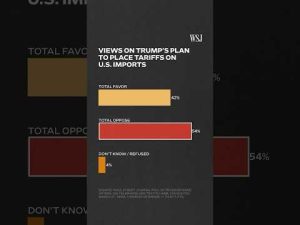In a recent discussion on immigration issues, a variety of themes crystallized around the ongoing challenges presented by illegal immigration and crime in the United States. The conversation paints a rather chaotic picture where individuals are demanding accommodations and rights that many believe should be reserved for legal residents. It’s almost as if the people entering the country illegally are storming into a host’s living room and dictating the terms of their stay, leaving those on the receiving end bewildered and frustrated.
The recent apprehension of a major kingpin associated with the notorious MS-13 gang highlighted the growing concerns about the safety of American communities. The ongoing immigration crisis is not just a matter of people seeking a better life; it has turned into a pressing issue of public safety. Thousands of foreign gang members have been arrested, bringing the harsh reality of their crimes to the forefront. It’s hard to deny the connection between the rise in crime and the ineffective immigration policies of the past few years, particularly under the current administration, which has been criticized for its lack of decisive action.
Virginia Governor Glenn Youngkin’s remarks pointed to a significant shift in how law enforcement cooperates with both state and federal agencies to tackle these issues. The collaboration is essential, as creating lists of targets for arrest has proven effective in taking dangerous individuals off the streets. There seems to be a clear distinction drawn between previous administrations’ approaches and the current government’s renewed strategy aimed at enhancing public safety and enforcing the laws that protect American citizens.
Furthermore, the situation reveals some troubling contradictions in the political landscape, especially regarding non-governmental organizations (NGOs) that seem to be working against governmental interests. These NGOs collect taxpayer dollars while simultaneously pushing to support illegal immigrants, diverting resources from American citizens who may be in need themselves. It’s a confounding circle where the government funds organizations that then challenge the government, creating confusion and frustration among taxpayers who are left to wonder why their money is not being used to enhance safety in their communities.
In an amusing twist, the discussion also brings up the absurd reality of judicial rulings that seem to favor certain parties over others, suggesting a double standard in the legal system. While an earlier ruling mandated that taxpayer resources be funneled to support thousands of individuals who may not even have a legitimate claim to remain in the country, those same judges often seem to stifle the actions of those trying to protect American citizens. The irony is thick: judges can dictate the flow of taxpayer dollars to support foreign nationals while limiting funding for facilities that could enhance safety for American families.
Typically, one might expect that the safety and well-being of legal citizens would take priority. However, it appears that many remain misguided, thinking that illegal immigration is a victimless crime, while the reality is that it comes with significant repercussions. As Americans reflect on these developments, it’s crucial to ground future discussions in the understanding that protecting one’s home and community is not xenophobic; it’s a rational response to a growing crisis that affects every corner of the nation.







